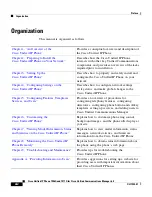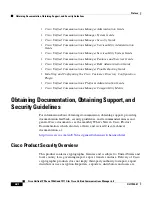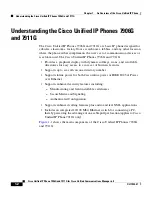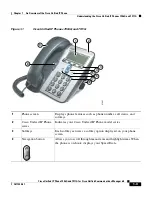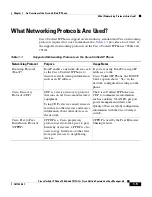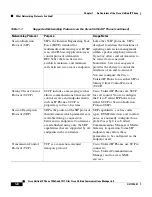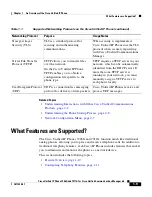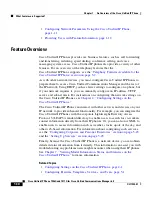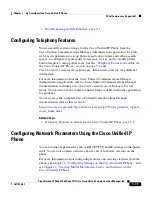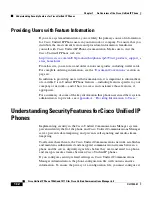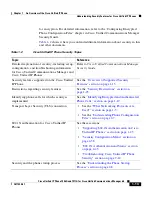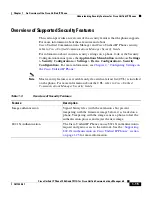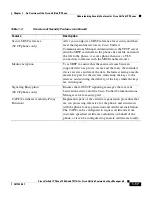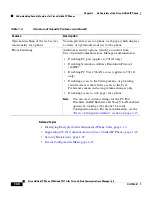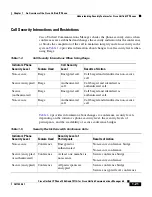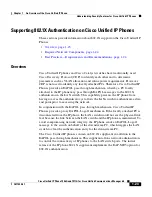
1-9
Cisco Unified IP Phone 7906G and 7911G for Cisco Unified Communications Manager 6.0
OL11954-01
Chapter 1 An Overview of the Cisco Unified IP Phone
What Features are Supported?
Related Topics
•
Understanding Interactions with Other Cisco Unified Communications
Products, page 2-2
•
Understanding the Phone Startup Process, page 2-8
•
Network Configuration Menu, page 4-7
What Features are Supported?
The Cisco Unified IP Phones 7906G and 7911G function much like traditional
analog phones, allowing you to place and receive telephone calls. In addition to
traditional telephony features, each Cisco IP Phone includes features that enable
you to administer and monitor the phone as a network device.
This section includes the following topics:
•
Feature Overview, page 1-10
•
Configuring Telephony Features, page 1-11
Transport Layer
Security (TLS)
TLS is a standard protocol for
securing and authenticating
communications.
When security is implemented,
Cisco Unified IP Phones use the TLS
protocol when securely registering
with Cisco Unified Communications
Manager.
Trivial File Transfer
Protocol (TFTP)
TFTP allows you to transfer files
over the network.
On the Cisco Unified IP Phone,
TFTP enables you to obtain a
configuration file specific to the
phone type.
TFTP requires a TFTP server in your
network, which can be automatically
identified from the DHCP server. If
more than one TFTP server is
running in your network, you must
manually assign a TFTP server to
each phone locally.
User Datagram Protocol
(UDP)
UDP is a connectionless messaging
protocol for delivery of data packets.
Cisco Unified IP Phones receive and
process UDP messages.
Table 1-1
Supported Networking Protocols on the Cisco Unified IP Phone (continued)
Networking Protocol
Purpose
Usage Notes
Summary of Contents for 7906G - Unified IP Phone VoIP
Page 4: ......


